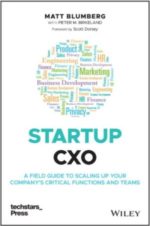In From the Perimeter
In From the Perimeter
I’m at the Direct Marketing Association’s annual massive trade show (DMA*05) in Atlanta. While there are lots of things to potentially blog about, I think the most interesting one is the simplest. When I started attending the DMA’s shows six years ago, the only interactive marketeing companies who exhibited were email vendors and the occasional sweepstakes company — and any interactive marketing company who did bother to show up was relegated to a small booth space in a corner of the trade show floor, away from the real action. A friend of mine once told me it was easy for him to hit all the email guys at DMA — just walk around the perimeter of the room.
It’s 2005, and oh how things have changed. The DMA put the “Interactive Marketing Pavilion” center stage this year, literally in the middle of the floor. Besides Return Path, loads of other interactive marketing companies (and not just the email and sweeps guys!) have prime real estate at the show. Within eyeshot of our booth are fellow email companies SilverPop, StrongMail, WhatCounts, Accucast, and ExactTarget, as well as analytics companies like Omniture, online ad companies like Blue Lithium, Kanoodle, and Advertising.com, lead gen companies like Cool Savings, and even a search firm or two.
The move is more than symbolic and more than just the fact that online marketing vendors have been around long enough to bid on better booth locations (although no doubt both of those things are true). It’s representative of the way mainstream marketers now conduct business — increasingly online and increasingly multi-channel. Online is another important part of the mix, not the stepchild.
Online marketing firms are now in from the perimeter, and we are happy to be here!
Response to a Deliverability Rant
Response to a Deliverability Rant
Justin Foster from WhatCounts, an email service provider based in Seattle, wrote a very lengthy posting about email deliverability on the WhatCounts blog yesterday. There’s some good stuff in it, but there are a couple of things I’d like to clarify from Return Path‘s perspective.
Justin’s main point is spot-on. Listening to email service providers talk about deliverability is a little bit like eating fruit salad: there are apples and oranges, and quite frankly pineapples and berries as well. Everyone speaks in a different language. We think the most relevant metric to use from a mailer’s perspective is inbox placement rate. Let’s face it – nothing else matters. Being in a junk mail folder is as good as being blocked or bounced.
Justin’s secondary point is also a good one. An email service provider only has a limited amount of influence over a mailer’s inbox placement rate. Service providers can and must set up an ironclad email sending infrastructure; they can and must support dedicated IP addresses for larger mailers; they can and must support all major authentication protocols — none of these things is in any way a trivial undertaking. In addition, service providers should (but don’t have to) offer easy or integrated access to third-party deliverability tools and services that are on the market. But at the end of the day, most of the major levers that impact deliverability (complaint rates, volume spikiness, content, registration/data sources/processes) are pulled by the mailer, not the service provider. More on that in a minute.
I’d like to clarify a couple of things Justin talks about when it comes to third-party deliverability services.
Ok, so he’s correct that seed lists only work off of a sample of email addresses and therefore can’t tell a mailer with 100% certainty which individual messages reach the inbox or get blocked or filtered. However, when sampling is done correctly, it’s an incredibly powerful measurement tool. Email deliverability sampling gives mailers significantly more data than any other source about the inbox placement rate of their campaigns. Since this kind of data is by nature post-event reporting, the most interesting thing to glean from it is changes in inbox placement from one campaign to another. As long as the sampling is done consistently, that tells a mailer the most critical need-to-know information about how the levers of deliverability are working.
For example, we released our semi-annual deliverability tracking study for the first half of 2005 yesterday, which (download the whitepaper with tracking study details here or view the press release here). We don’t publicly release mailer-specific data, but the data that went into this study about specific clients is very telling. Clients who start working with us and have, say a 75% inbox placement rate — then work hard on the levers of deliverability and raise it to 95% on a sampled basis, can see the improvements as their sales and other key email metrics jump by 20%. Just because there’s a small margin of error on the sample doesn’t render the process useless.
Second, Justin issues a big buyer beware about Bonded Sender and other “reputation” services (quotes deliberate – more on that in a minute as well). Back in June, we released a study about Bonded Sender clients which showed that mailers who qualified for Bonded Sender saw an average of a 21% improvement in inbox delivery rates (range of 15%-24%) at ISPs who use Bonded Sender such as MSN, Hotmail, and Roadrunner. We were pretty careful about the data used to analyze this. We only looked at mailers who were clients both before and after joining the Bonded Sender program for enough time to be relevant, and we looked at a huge number (100,000+) of campaigns. Yes, it’s still “early days” for accreditation programs, but we think we’re off to a good start with them given this data, and the program isn’t all that expensive relative to what mailers pay for just about everything else in their email deployment arsenal.
Finally, let me come back to the two “more on that in a minute” points from above. I’ll start with the second one — Bonded Sender is an accreditation program, or a whitelist, NOT a reputation service. Accreditation and Reputation services are both critical components in the fight to improve inbox placement of legitimate, permissioned, marketing emails, but they’re very different kinds of programs (a little background on why they’re important and how they fit with authentication here).
Accreditation services like Bonded Sender work because, for the very best mailers, third parties like TRUSTe essentially vouch that a mailer is super high quality — enough so that an ISP can feel comfortable putting mail from that mailer in the inbox without subjecting it to the same level of scrutiny as random inbound mail.
There are no real, time-tested reputation services for mailers in the market today. We’re in the process of launching one now called Sender Score. Sender Score (and no doubt the other reputation services which will follow it) is designed to help mailers measure the most critical levers of deliverability so they can work at solving the underlying root cause problems that lead to low inbox placement. This is really powerful stuff, and it will ultimately prove our (and Justin’s) theory that mailers have much more control over their inbox placement rate/deliverability than service providers.
Where does all this lead? Two simple messages: (1) if you outsource your email deployment to an email service provider, pick your provider carefully and make sure they do a good job at the infrastructure-related levers of email deliverability that they do control. (2) whether you handle email deployment in-house or outsource it to a service provider, your inbox placement rate is largely in your control. Make sure you do everything you can to measure it and look closely at the levers, whether you work with a third-party deliverability service or not.
Apologies for the lengthy posting.
Counter Cliche: Failure Is Not an Orphan
Counter Cliche: Failure Is Not an Orphan
I haven’t written one of these for a while, but this week, Fred’s VC Cliche of the Week, Success Has a Thousand Fathers, definitely merits an entrepreneurial point of view. Fred’s main point is right — it’s very easy when something goes right, whether a company/venture deal or even something inside the company like a good quarter or a big new client win, for lots of people to take credit, many of whom don’t deserve it.
But what separates A companies from B and C companies is the ability to recognize and process failures as well as successes. Failure is not orphan. It usually has as many real fathers as success. Although it’s true that Sometimes, There is No Lesson to Be Learned, failure rarely emerges spontaneously.
Companies that have a culture of blame and denial eventually go down in flames. They are scary places to work. They foster in-fighting between departments and back-stabbing among friends. Most important, companies like that are never able to learn from their mistakes and failures to make sure those things don’t happen again.
Finger-pointing and looking the other way as things go south have no place in a well-run organization. While companies don’t necessarily need to celebrate failures, they can create a culture where failures are treated as learning experiences and where claiming responsibility for a mistake is a sign of maturity and leadership. And all of this starts at the top. If the boss (CEO, department head, line manager) is willing to step up and acknowledge a mistake, do a real post-mortem, and process the learnings with his or her team without fear of retribution, it sets an example that everyone in the organization can follow.
What a View, Part II
What a View, Part II
In Part I, I talked about how Return Path’s 360 reviews have become a central part of our company’s human capital strategy over the past five years. While most staff members’ reviews have been done for weeks or months now, I just finished up the final portion of my own review, which I think is worth sharing.
I always include my Board in my own 360. My process is as follows:
1. I send the Board all the raw (and summarized) data from the staff reviews of me, both quantitative and qualitative.
2. I send the Board a list of questions to think about in terms of their view of my performance (see below).
3. I have a third party moderator, in my case a great OD consultant/executive coach that I work with, Marc Maltz from Triad Consulting, meet with the Board (without me present) for 1-2 hours to moderate a discussion of these questions.
4. The moderator summarizes the conversation and helps me marry the feedback from the Board with the feedback from my team.
The questions I ask them to consider are different from the question my staff answers about me, because the relationship and perspective are different. For each question, I also summarize what their collective response was the prior year to refresh their memory.
1. Staff management/leadership: How effective am I at building and maintaining a strong, focused, cohesive team? Do I have the right people in the right roles at the senior staff level?
2. Resource allocation: Do I do a good enough job balancing among competing priorities internally? Are costs adequately managed?
3. Strategy: Did you feel like last year’s strategy session was thorough enough? Do you think we’re on target with what we’re doing? Am I doing a good enough job managing to it while being nimble enough to respond to the market?
4. Execution: How do I and the team execute vs. plan? What do you think I could be doing to make sure the organization executes better?
5. Board management/investor relations: Do you think our board is effective and engaged? Have I played enough of a role in leading the group? Do you as a director feel like you’re contributing all you can contribute? Do I strike the right balance between asking and telling? Are communications clear enough and regular enough?
6. Please comment on how I have handled some of the major issues in the past 12 months (with a listing of critical incidents).
The feedback I got is incredibly valuable, and once I marry it with the feedback I got from my staff, I will have my own killer development plan for the next 12-24 months.
CEO Diary: What Makes a Great Day?
CEO Diary: What Makes a Great Day?
5:30 a.m. – run (have to keep up with Brad)
8:45 a.m. – networking coffee with former main contact at large strategic partner; now CFO of another company in the industry
9:30 a.m. – work time/email/read newsletters, Wall St. Journal online, various RSS feeds
10:30 a.m. – internal meeting to discuss mothballing a product feature that’s hard to maintain and doesn’t generate much revenue
11:00 a.m. – internal meeting to clarify roles and responsibilities between account management and client technical operations
11:30 a.m. – brainstorm 2006 strategy with head of one of our lines of business
1:00 p.m. – great sales call on a Tier I prospect with new sales person; business almost certainly forthcoming!
3:00 p.m. – meet with head of sales and hea of HR to discuss candidate for sales position and potential changes to sales compensation structure
3:30 p.m. – review draft of new (revolutionary!?!?) corporate web site; do deep dive on critical headlines and copy points with team members
4:30 p.m. – status meeting with new head of marketing,including quick stand-up meeting on PR strategy for upcoming trade show with one line of business head and product manager
5:30 p.m. – work/email/planning next Board meeting agenda/blog posting
7:00 p.m. – dinner with CTO
Energizing (frenetic?). Diverse in terms of functions/departments covered. Good balance of internal vs. external. Some items high level, some more detailed. Mix of brainstorming vs. decisions vs. status checks. Some social mixed in with hardcore work. This is why I love my job!
Book Short: The Most Rapacious Guys in the Room
Book Short: The Most Rapacious Guys in the Room
I just finished The Smartest Guys in the Room, by journalists Bethany McLean and Peter Elkind. This is the story of Enron, and what a tale it is! The book is a good quick business novel read. It reminded me a lot of Barbarians at the Gate, except that it made me far angrier. I’m not sure if that’s because I’m at a different place in my career now than I was 10 years ago and therefore have a different appreciation for what goes on in companies, or if the Enron guys were just far worse than anyone surrounding RJR Nabisco. But in any case, as my Grandpa Bill would have said, this one certainly raised my hackles.
Anyway, I can’t even get into the details without working myself into a frenzy about these crooks, but suffice to say there are lots of “what not to do” lessons in this book, starting with CEO Ken Lay’s wuss-like, disconnected approach to leading the company and ending with CFO Andy Fastow’s insane rationalizations for using the company as his own piggy bank. Anyway, I thought it would just be easier to just list out a few simple things to look for in your own company if you’re concerned you might be having some financial scandals within. You know you have a problem if…
– Your company has 3,000 off-balance sheet special purpose entities, including 800 in the Caymans
– Your CEO has waived your company code of ethics twice so that the CFO could negotiate deals for his own profit against the company
– Your President combatively calls an analyst an asshole on an earnings call when asked why the company couldn’t produce a balance sheet and cash flow statement with its income statement and earnings release
– Your staffers meet someone from your auditor and say “oh, you’re the guy that won’t let us do something”
– Your accounting department becomes viewed as a major profit center because of its treatment of revenue
It’s truly astonishing what these bozos thought they could get away with. Thank God they’re going to jail. Thanks to my colleague Patty Mah (a friend of the author) for this book.
links for 2005-09-22
-
Great blog posting from Rob Walling on hiring like crazy
Hackoff – The Blook
Hackoff – The Blook
Fred and Brad have already posted some pertinent details as well, but here’s a must-read for you – entrepreneur Tom Evslin, who has a great blog, has just launched an online book, serialized as a blog. It’s about a fictitious Internet bubble company called Hackoff.com (nice name!), and you can subscribe to the episodes of the book, either by RSS feed or by email. The first episode and various subscription options are all here.
Tom’s a great writer and had front row seats/was a lead actor in the bubble. The first episode has me hooked. This is going to be fun!
RSS Advertising
RSS Advertising
This is two-day-old news by now, but in case you missed it, we just announced than we – Return Path – are partnering with Feedburner to take RSS advertising to the next level (coverage here, here, and here).
As you probably know if you receive my feed or other ones, Feedburner has been doing some experimenting with ad units at the bottom of feeds for months now, first using Amazon and more recently Google AdSense to serve up ads. And as you may know if you look at ads closely, neither of those services has done a great job making the ads truly relevant. I can’t tell you, for example, the number of times I write a posting about a book, and the ad has absolutely nothing to do with books, let alone the book or author I’m writing about. My favorite one was a posting Fred wrote called “Why a Conservative Turns Liberal,” with an ad called “Meet Conservative Singles” — probably not Fred’s intent, although it certainly brought a smile to my face.
Anyway, what we’re doing with Feedburner is very simple. Our Customer Acquisition Solutions group sells lead generation products to hundreds of advertisers each month in the form of either email list rental or web-based lead gen based on categories of interest expressed by consumers who sign up with our Postmaster Direct service. Feedburner has categorized a number of the 100,000+ feeds they publish as “Consumer Electronics” or “Computing and Technology,” which are two of the strongest categories we have, both in terms of consumers and in terms of advertisers.
So our salesforce is going to add “RSS” as an option for our advertisers in those categories, and we will work with Feedburner to insert demo-targeted ads into select feeds. We and Feedburner both acknowledge this is an experiment, but we’re very optimistic about the results: the demographics should line up perfectly and provide our advertisers with a new channel as part of their existing campaigns. I’m sure Dick or someone else at Feedburner will blog about it as well at some point, and if we learn anything truly interesting after the first few months, we’ll let the world know!
Reality Bites
Reality Bites
So Oracle is buying the $1.5 billion revenue Siebel for $5.85 billion, and eBay is buying the at most $60 million revenue Skype for $2.4 billion, which could grow to $4.1 billion if Skype hits some performance targets. Huh. Must be all those pesky customers, receivables, and assets bogging down Siebel’s books.
UPDATE: Fortune’s David Kirkpatrick, one of the most insightful journalists covering technology, makes some sense of this in this week’s Fast Forward column.



